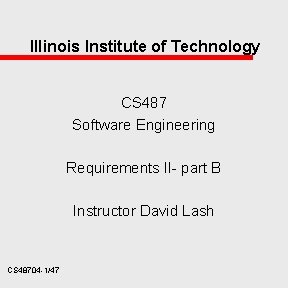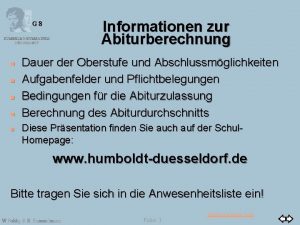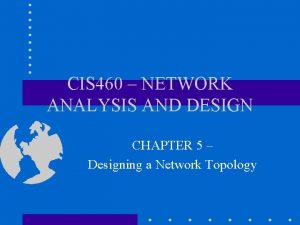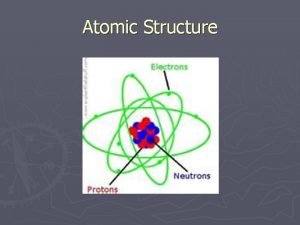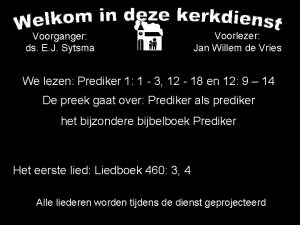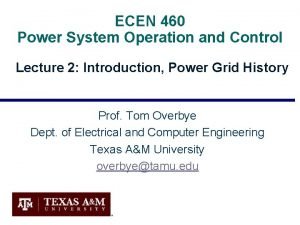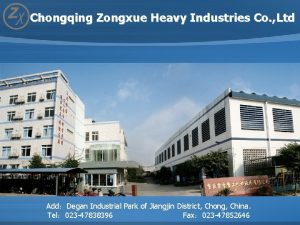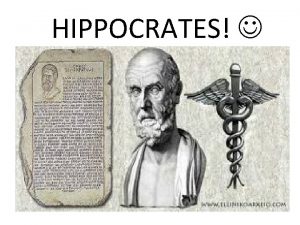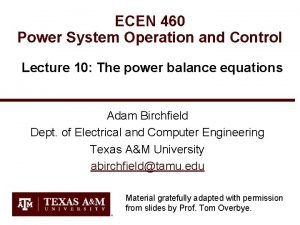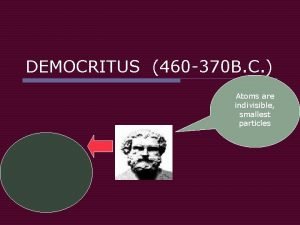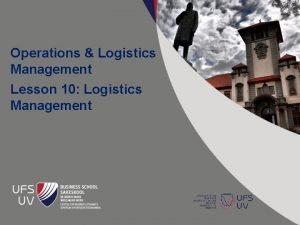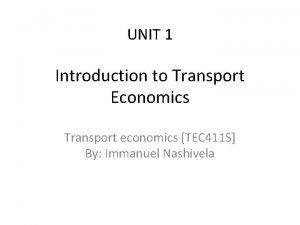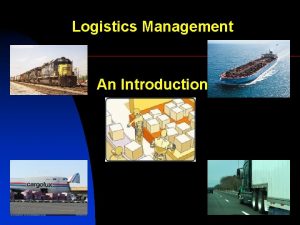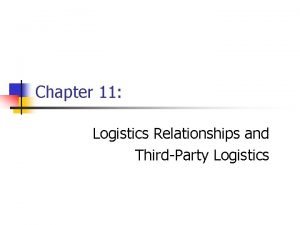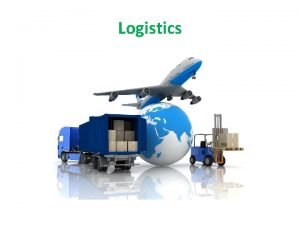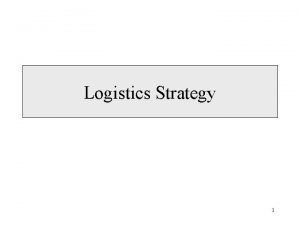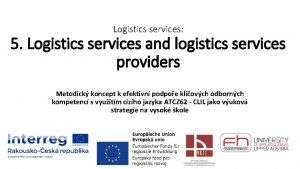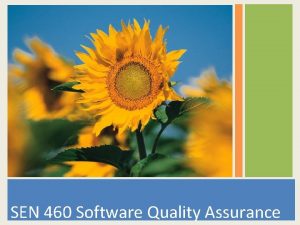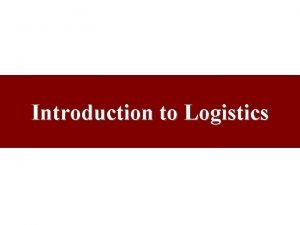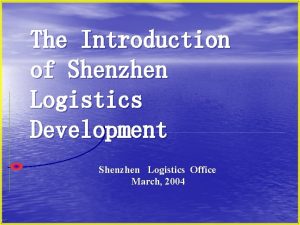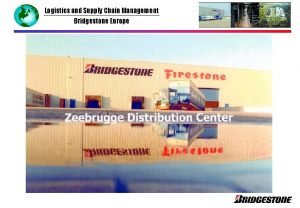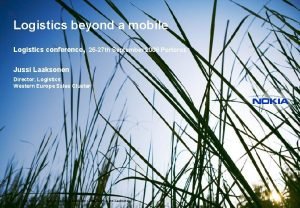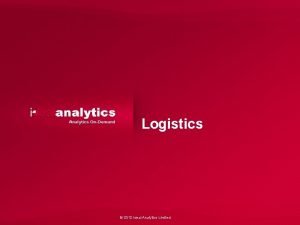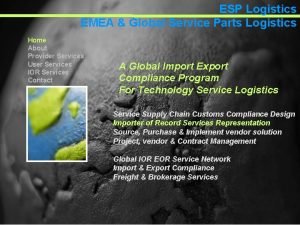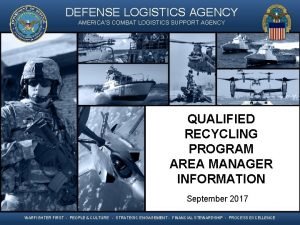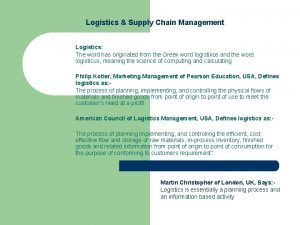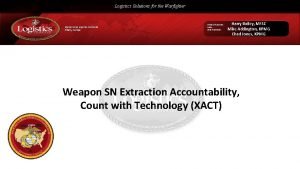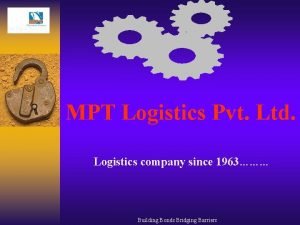Introduction to IT for Logistics 460 487 IN

























- Slides: 25

Introduction to IT for Logistics 460 -487 IN FOR MATIO N TEC HNOLO GY F OR LOGIS TICS BY AJ. THAN YADA SANGVILAI PRINC E OF S ONGK LA UNIVERS ITY

What are Logistics? According to Oxford Dictionary ◦ The detailed organization and implementation of a complex operation. ◦ The activity of organizing the movement, equipment, and accommodation of troops. ◦ The commercial activity of transporting goods to customers. ◦ The business of transporting and delivering goods. ◦ The activity of moving equipment, supplies and people for military operations ◦ Logistics (of something) the practical organization that is needed to make a complicated plan successful when a lot of people and equipment are involved

What are Logistics? According to Business Dictionary ◦ Planning, execution, and control of the procurement, movement, and stationing of personnel, material, and other resources to achieve the objectives of a campaign, plan, project, or strategy. ◦ It may be defined as the 'management of inventory in motion and at rest. '

Business logistics "having the right item in the right quantity at the right time at the right place for the right price in the right condition to the right customer“ evolved since the 1960 s due to the increasing complexity of supplying businesses with materials and shipping out products in an increasingly globalized supply chain, leading to a call for professionals called "supply chain logisticians". The main functions of a qualified logistician include inventory management, purchasing, transportation, warehousing, consultation, and the organizing and planning of these activities.

What is IT? Information technology (IT) is the application of computers and telecommunications equipment to store, retrieve, transmit and manipulate data, often in the context of a business or other enterprise. The definition consists of three categories: ◦ techniques for processing ◦ the application of statistical and mathematical methods to decision-making ◦ the simulation of higher-order thinking through computer programs. Several industries are associated with information technology, including computer hardware, software, electronics, semiconductors, internet, telecom equipment, e-commerce and computer services.

How IT involves in Logistics?

How IT involves in Logistics? Source: ผศ. ดร. เผาภค ศรส

Logistics & Information Systems Logistics Information System • Design and Implementation of the efficient flow and storage of goods • Design, Develop, Installment and application of information systems Logistics Information System

Logistics & Information Systems An interacting structure of people, equipment, and procedures which together make relevant information available to the logistics manager for the purposes of planning, implementing and control. Information flow makes a logistical system dynamic. Quality and timeliness of information are key actors in logistical operations. Bowersox and Closs

Significance of IT in logistics Source: Burnson P. 2014

Is IT significance in logistics? Technology is not a core value of business operations in logistics, but supports and facilitates the smoothness. Let’s technology helps you reduce the workload not the opposite!!! Recent innovations in IT related to logistics have emphasized using information to provide better visibility of physical goods. This approach emphasizes the use of information as a supporting element of the value-added process, rather than as a source of value itself. However, a new, parallel virtual value chain can emerge from the physical value chain that currently defines logistics functions. The traditional, physical value chain defines the "marketplace" while the virtual chain defines the "marketspace"

Let’s make use of IT The most effective and worthy results of using technology could come only when ◦ Clearly define objective for introducing technology to the organization. ◦ It is consistence with the system, user, and environment.

• Control cost • Effective management for scheduling/ routing/ planning • Increase forecasting accuracy • Facilitate the coordination Cons Pros and Cons • Hardware failure • Software failure • An error with the digital map used by pilots in the cockpit. • Lost connection

Example: IT in logistics Source: jahskoya, 2011

Example: Information flow Source: ผศ. ดร. เผาภค ศรส


Role of IT in Supply chain & Logistics Late 80 s: the information flow between functional areas within an organization and between supply chain member organizations were paper based. ◦ Transaction and communication was slow ◦ Often over looked as a critical competitive resource because its value to supply chain members was not clearly understood. IT infrastructure capability provides a competitive positioning of business initiatives ◦ cycle time reduction, implementation, implementing redesigned crossfunctional processes.

Role of IT in Supply chain & Logistics Information is a key supply chain driver because it allows the other supply chain drivers to work together with the goal of ◦ creating an integrated ◦ coordinated supply chain ◦ it provides the foundation on which supply chain processes execute transactions and mangers make decisions ◦ a manger cannot know what customers want, how much inventory is in stock, and when more product should be produced or shipped ◦ information technology consists of the tools used to gain awareness of information

Benefits of IT application in Supply Chain Management Streamlining—Communicate and collaborate more effectively with suppliers worldwide. Connecting—Make the connection between what your customers want and what you produce. Analyzing—Analyze your supply chain and manufacturing options and choose the plan that makes best use of your assets. Synchronizing—Synchronize the flow of your batch production by managing the capacity of vessels, tanks, and lines-and the flow between them. Communicating—Improve your communication and collaboration with suppliers worldwide.

Benefits of IT application in Supply Chain Management Designing—Create the optimal supply chain network and adapt the network to keep pace with changes in your business. Transforming—Transform processes inside the warehouse and across the supply chain to meet demands for new efficiencies. Understanding—Get a better understanding of your warehouse labor activities and implement the changes you need to optimize worker performance. Maximizing—Maximize warehouse profits by using advanced costing, billing, and invoicing capabilities. Optimizing—Optimize your day-to-day fleet performance to reduce costs and improve customer satisfaction.

How IT can be applied in Supply Chain Management Electronic Commerce: It is the term used to describe the wide range of tools and techniques utilized to conduct business in a paperless environment. Electronic commerce therefore includes electronic data interchange, e-mail, electronic fund transfers, electronic publishing, image processing, electronic bulletin boards, shared databases and magnetic/optical data capture. Companies are able to automate the process of moving documents electronically between suppliers and customers. Data warehouse: Data warehouse is a consolidated database maintained separately from an organization’s production system database. Many organizations have multiple databases. A data warehouse is organized around informational subjects rather than specific business processes. Data held in data warehouses are time dependent, historical data may also be aggregated.

How IT can be applied in Supply Chain Management Electronic Data Interchange: Electronic Data Interchange (EDI) refers to computer-to-computer exchange of business documents in a standard format. EDI describe both the capability and practice of communicating information between two organizations electronically instead of traditional form of mail, courier, & fax. Though the use of EDI supply chain partners can overcome the distortions and exaggeration in supply and demand information by improving technologies to facilitate real time sharing of actual demand supply information.

How IT can be applied in Supply Chain Management Bar coding and Scanner: Bar code scanners are most visible in the check out counter of super market. This code specifies name of product and its manufacturer. Other applications are tracking the moving items such as components in PC assembly operations, automobiles in assembly plants. Enterprise Resource planning (ERP) tools: Many companies now view ERP system (eg. Baan, SAP, People soft, etc. ) as the core of their IT infrastructure. ERP system have become enterprise wide transaction processing tools which capture the data and reduce the manual activities and task associated with processing financial, inventory and customer order information. ERP system achieve a high level of integration by utilizing a single data model, developing a common understanding of what the shared data represents and establishing a set of rules for accessing data.

Conclusion The strategic and technological innovations in supply chain will impact on how organizations buy and sell in the future. However clear vision, strong planning and technical insight into the technology’s capabilities would be necessary to ensure that companies maximize the technology’s potential for better supply chain management and ultimately improved competitiveness. Internet technology, World Wide Web, electronic commerce etc. will change the way a company is required to do business. These companies must realize that they must harness the power of technology to collaborate with their business partners. That means using a new breed of SCM application, the Internet and other networking links to observe past performance and historical trends to determine how much product should be made as well as the best and cost effective method for warehousing it or shipping it to retailers.

 Cs 487
Cs 487 460+370
460+370 Le duet 198
Le duet 198 460 punkte abitur
460 punkte abitur Luxury rental cars houston
Luxury rental cars houston Cis 460
Cis 460 460 democritus atom model
460 democritus atom model Gezang 179
Gezang 179 Historical figures in healthcare
Historical figures in healthcare 300'e yuvarlanan en küçük sayı
300'e yuvarlanan en küçük sayı Ecen 460
Ecen 460 Sen 460
Sen 460 Multis complex shd 460
Multis complex shd 460 St460ts
St460ts Hippocrates was born in 460
Hippocrates was born in 460 Hs 460
Hs 460 Ecen 460
Ecen 460 Democritus 460 bc
Democritus 460 bc Introduction to operations and supply chain management
Introduction to operations and supply chain management Unit 1 introduction to logistics
Unit 1 introduction to logistics Formuö
Formuö Typiska novell drag
Typiska novell drag Nationell inriktning för artificiell intelligens
Nationell inriktning för artificiell intelligens Returpilarna
Returpilarna Shingelfrisyren
Shingelfrisyren En lathund för arbete med kontinuitetshantering
En lathund för arbete med kontinuitetshantering
